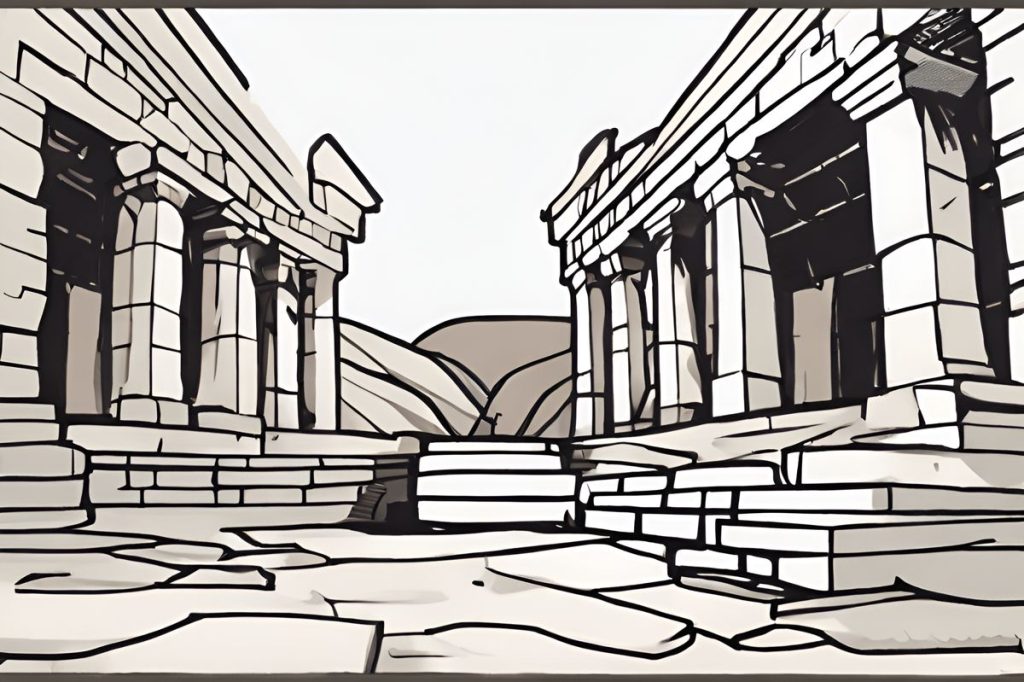The new cultural routes in Famagusta are unlocking hidden historical and cultural gems, connecting visitors and locals to the district’s rich heritage. These routes serve as a bridge to the past, promoting education, pride, and stewardship for cultural preservation, while also offering potential economic and social benefits through cultural tourism.
What is the significance of the new cultural routes in Famagusta?
The new cultural routes in Famagusta are significant because they enhance accessibility to the district’s hidden historical and cultural monuments, connecting visitors and locals to the area’s rich heritage. They serve as a bridge to the past, promoting education, pride, and stewardship for cultural preservation, while also offering potential economic and social benefits through cultural tourism.
Cultural Revival through New Routes
Famagusta, a district rich in history and cultural treasures, is taking a significant leap forward with the creation of new cultural routes. These routes, crafted by the deputy ministries of culture and tourism, aim to shine a spotlight on remote and lesser-known monuments within the region. During the Achna…Place, History, Culture, People conference, Deputy Culture Minister Vasiliki Kassianidou expressed the importance of this initiative for the community of Achna and its residents. The goal is to provide a path that leads both locals and tourists to a deeper appreciation of the area’s cultural and historical heritage.
This mission is not just about rediscovery but also about accessibility. It’s essential that the public has the opportunity to engage with and learn from the monuments that have stood as silent witnesses to history. Through the implementation of these cultural routes, the hidden narratives of Famagusta’s past will become accessible to all who wish to explore them.
Archaeological Treasures Unearthed
Over the past two decades, important archaeological finds have been brought to light in the region. These discoveries include ancient rock-hewn tombs and a shrine that are testament to Famagusta’s rich Byzantine tradition. The significance of these finds cannot be overstated, as they provide invaluable insights into the lives of those who came before us.
The implementation of cultural routes serves as a bridge connecting modern-day residents and visitors to their ancestral roots. This connection is vital because it not only educates but also instills a sense of pride and stewardship for the preservation of these cultural assets.
A Joint Venture for Cultural Preservation
The synergy between the deputy ministries of culture and tourism is of particular note. Their collaboration underscores the recognition that cultural heritage is an integral part of the tourism experience. By promoting access and knowledge, they are ensuring that Famagusta’s cultural character is not only showcased but celebrated.
These initiatives are a clear indication of the deep commitment to cultural preservation and the promotion of cultural tourism in the district. The involvement of the ministries also indicates the potential economic and social benefits that such cultural routes can bring to the region, infusing new life into the local communities.
The Future Path
Looking ahead, these cultural routes promise to offer an enriching experience for all who traverse them. As the details of the upcoming routes unfold, anticipation grows for the stories and secrets they will reveal. The expectation is not only to experience the history of Famagusta but to become part of its living story.
As these plans develop and the routes open to the public, one can only imagine the positive impact they will have on the region. By bringing the past into the present, Famagusta is poised to become a beacon for cultural enthusiasts and history lovers from around the world.
How are the new cultural routes in Famagusta enhancing accessibility to historical and cultural monuments?
The new cultural routes in Famagusta are designed to shine a spotlight on remote and lesser-known monuments within the region, providing a path for both locals and tourists to engage with and learn from the area’s rich heritage. These routes serve as a bridge connecting modern-day residents and visitors to their ancestral roots, offering a deeper appreciation of Famagusta’s cultural and historical heritage.
What archaeological treasures have been unearthed in Famagusta in recent years?
Over the past two decades, Famagusta has seen the discovery of important archaeological finds, including ancient rock-hewn tombs and a shrine that highlight the district’s rich Byzantine tradition. These finds provide invaluable insights into the lives of past inhabitants, adding to the cultural significance of the region.
How is the collaboration between the deputy ministries of culture and tourism contributing to cultural preservation in Famagusta?
The joint efforts of the deputy ministries of culture and tourism in Famagusta underscore the importance of recognizing cultural heritage as an integral part of the tourism experience. By promoting access and knowledge to cultural routes, they are ensuring that the district’s cultural character is not only showcased but celebrated. This collaboration signifies a deep commitment to cultural preservation and the promotion of cultural tourism in the region.
What can visitors expect from the cultural routes in Famagusta in the future?
As the cultural routes in Famagusta continue to develop, visitors can anticipate an enriching experience that will bring the past into the present. These routes aim to offer stories and secrets that will deepen one’s understanding and connection to Famagusta’s history and culture. The upcoming routes promise to have a positive impact on the region, attracting cultural enthusiasts and history lovers from around the world.

